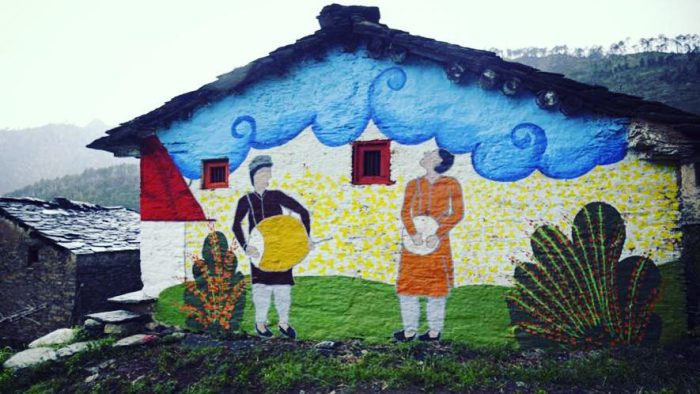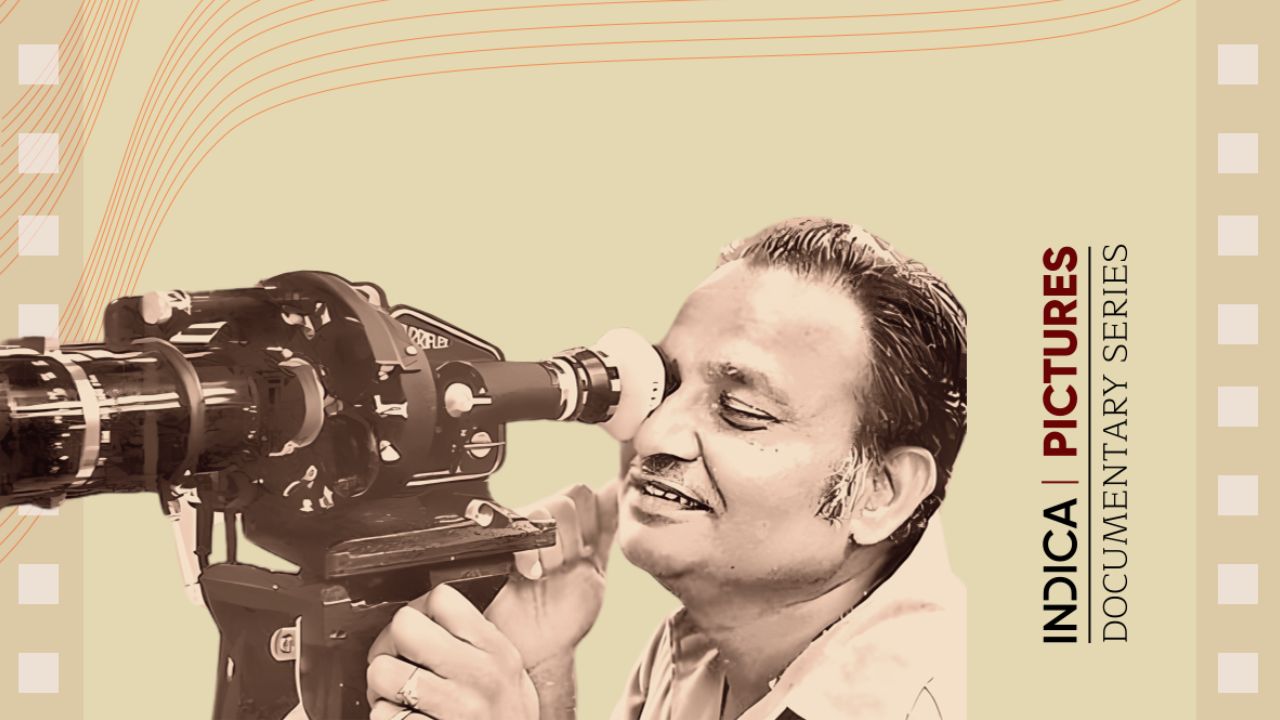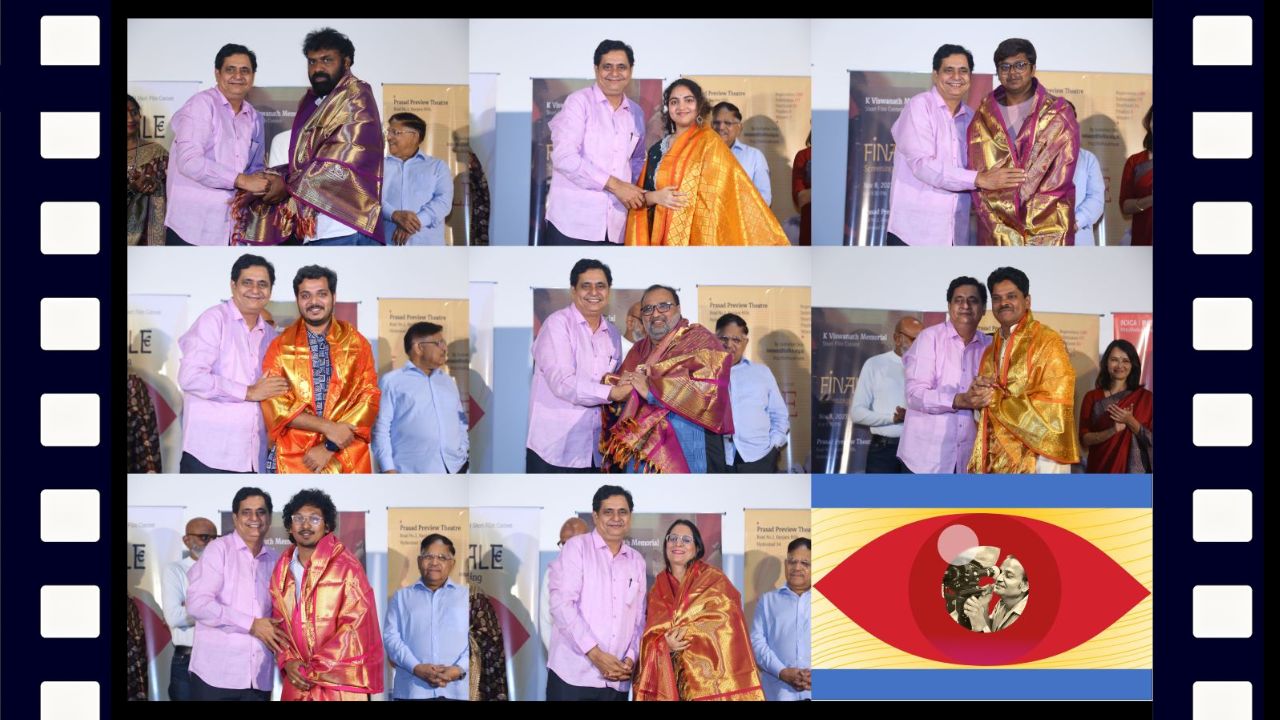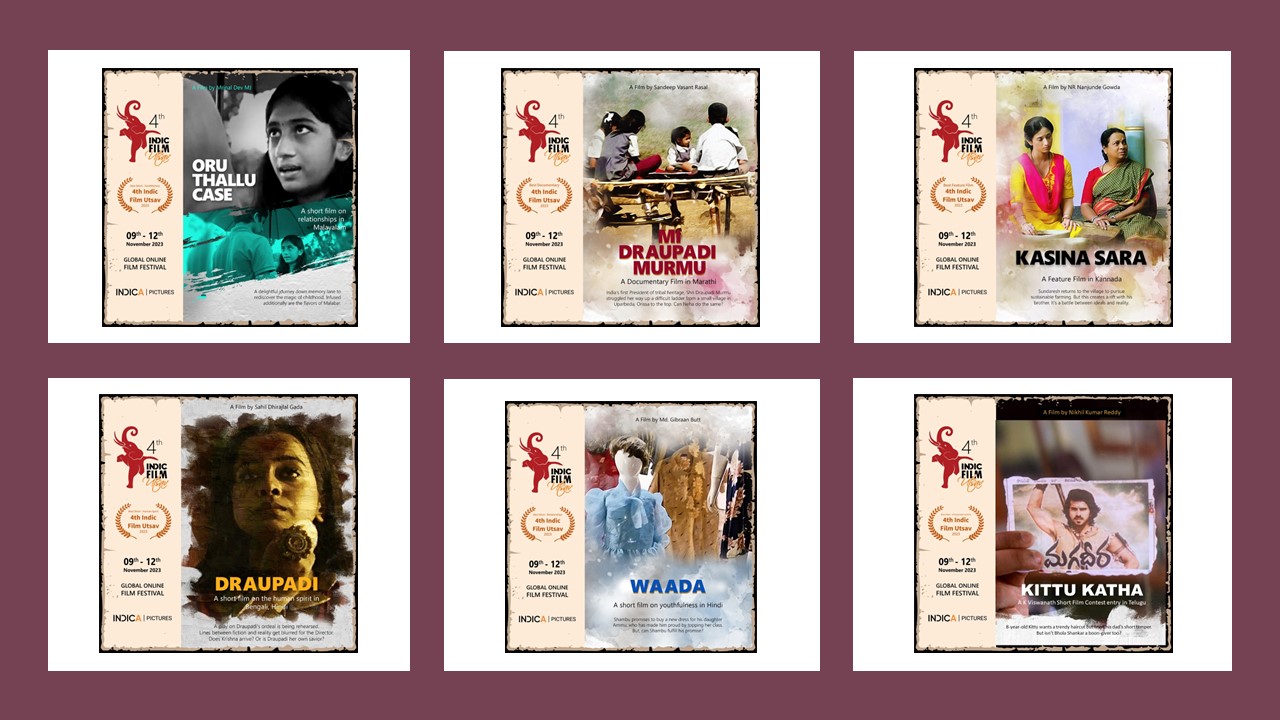Deepak Ramola brought together a group of artists to adopt the village of Saur in Tehri Garhwal, in his childhood home of Uttarakhand. With only 12 families left, as the rest of the village has abandoned it, the artists have tried to capture the stories and lives of the people still living there. His film the Wise Walls of Saur is based on his project of painting the walls of the abandoned houses with the stories of the residents both present and past.
Deepak is a filmmaker, lyricist and poet, bringing to his subjects a deep sensitivity of the ways of the common man. As the Director of the film he says, “As a child, I spent all my summer vacations at my maternal grandmother’s home in Rampur, a picturesque village in Uttarakhand, with clean air, brooks, and a lot of free time for conversation and stories. Over the years, I noticed the youth of the village increasingly migrating to the big cities in search of work, leaving behind age-old philosophies and value systems. The circumstances made me wonder what we could do to salvage the wisdom of rural life. The Wise Wall of Saur was born with the aim to document and celebrate the rural wisdom of a ghost village in Uttarakhand. The film is not only a narrative about a specific community addressing challenges but speaks of the universal sentiment of home, sense of displacement and desire to connect back to our roots. The film tells many stories of beliefs, creativity, community and the possibilities that bloom with collective action.”

Uttarakhand has such a beautiful natural landscape. How do you think we can stem people moving away from such beautiful villages?
People in the mountains have a strong and deep-rooted connection with nature. This sacred bond is embedded in local festivals, songs and cultural motifs. However, the allure of city life often pulls residents away in pursuit of better education and healthcare. To address this, we must improve local educational facilities and healthcare services, meeting the essential needs of the community. By nurturing sustainable livelihoods through eco-tourism, crafts, and agriculture, we can offer viable alternatives. Preserving our unique cultural heritage and involving the community in decision-making ensures a sense of belonging and pride.
You have childhood memories of this land, what motivated you to make this film?
Ever since I was 6 years old, I have had the good fortune of spending my summer vacations at my maternal grandmother’s home in a small village called ‘Rampur’. There was no dilemma when it came to choosing the destination. To spend holidays in the lap of nature, amid lush green mountains and a languid river versus going to a popular amusement park. I invariably chose the former. All of my best memories from childhood were shaped in the hills residing in a quaint setting. The conversations of people who live in the midst of nature are usually different from those that city people indulge in. They are widely personal, rooted in wisdom and strangely intimate. Merely kilometers away from the city limits, Rampur was an entirely different world.
I thoroughly enjoyed and looked forward to vacations in the village and each trip brought forth a significant fact. I noticed that the smart, young brigade of the village was increasingly migrating to the big cities. Lack of opportunities was often cited as the primary reason. But I realized that there was a larger conflict at play, something I only grasped when I matured and pondered upon it.
With my film, I aimed to capture these multilayered reasons, challenges, and dreams that unveil the complexities of migration. The painting is a small way to infuse hope and celebrate their unique stories.

Who organized the artists, whose idea it was to get the walls of abandoned houses painted? How did you interact with the artists?
When I first thought about capturing the profound wisdom of a village, I reached out to a close friend and one of India's most talented muralists, Poornima Sukumar. Together, we envisioned how these stories could be visually translated, painted on the grand canvas of the village walls. We delved into discussions with the 12 families residing in the village, immersing ourselves in the essence of their tales, and delving into the roots of the Garhwal School of Painting.
With the incredible collaboration of Poornima, my devoted team at Project FUEL, and a committed community of artists and volunteers, we went ahead on this journey, collectively breathing life into this ambitious project.
You have been involved in many projects where the wise words of communities are shared. What inspires you to go back in time culturally? How are these messages relevant even today?
In our extensive journey of documenting and sharing life lessons at Project FUEL, a striking pattern has emerged - many profound life lessons stem from tough experiences or adversities. As we assist individuals in opening up and reflecting on these crucial life moments, we've crafted an approach that fosters a sense of safety and empowerment, enabling people to address their vulnerabilities.
This transformative journey emphasizes a universal truth: everyone seeks solutions, hope, or validation in an authentic, unbiased, and personal manner. Diverse perspectives broaden the spectrum of choices, resonating uniquely with each person.
We draw from the wellspring of heritage, understanding that to honor its richness, we must share its brilliance with as many people as possible.
These messages hold immense relevance today, guiding us to pay attention to our roots, the legacy we carry, and the stories that have molded us. Connecting with a broader community and historical fabric gives us the courage to confront the challenges that lie ahead.

How was the film received and what was its impact?
The film has been embraced with overwhelming love, evoking a profound sense of responsibility among its viewers. It vividly portrays the harsh realities that villages endure, where lives are shadowed by the constant threat of migration. Personally, the film's impact has been most significant within the community of Saur itself. When we organized a screening exclusively for them, it was a poignant moment – many witnessed, perhaps for the first time, how incredible they are. It turned into a small but meaningful celebration of their tireless efforts to preserve their unique culture.
My hope is that as the film travels more, it will continue to provoke a pause and reflection in people. I aspire for it to be a catalyst for action, inspiring individuals to stand up and make a difference for the villages they hail from. Each person has the power to contribute to the preservation and flourishing of these invaluable, cherished communities. As Lailah Gifty Akita puts it in Pearls of Wisdom: Great Mind, “There is a beautiful village in every country.”

Can you narrate some special moments interacting with the 12 remaining families of the village?
During the painting and filming journey, the 12 families were not just our subjects; they became our trusted guides. They actively engaged with us, providing invaluable suggestions on the artwork, picking up paint brushes to contribute to the murals, and generously nourishing us with their delicious meals every single day. Leaving the village, I don't recall a single instance of going hungry.
One of the highlights of each day was spending time with the children in the temple courtyard. We would gather for some delightful, simple folk games, irrespective of age, creating a space where everyone could shed their inhibitions, learn, and share their knowledge. Those hours of play allowed us to connect, be vulnerable, and experience the pure joy of being part of a community. It was in these cherished moments that the real essence of the village and its people shone through.
As a poet, how did this project find expression through words?
Honestly, I am still trying to articulate the emotions I felt during my time in Saur. Making the film was a more accessible medium to capture the reverence I felt for the community. However, weaving it into poems has been hard. I tear up every single time I pen down a piece about my time spent in the village.
What I do carry with myself at all times is the nostalgia of goodness and simplicity I experienced. The village has become a metaphor of hope in my life, and this sentiment spills over into every story I try to tell.

What is the role of films, according to you, to highlight such social issues?
Films, to me, serve as society's mirrors, reflecting the untold narratives and struggles often overlooked. They possess a unique power to evoke empathy, awakening the audience to social issues they might not otherwise encounter. How many people get to learn about the migration in Uttarakhand in prime-time news? A well-crafted film can ignite conversations, challenge biases, and spark collective action. It's a tool to bridge gaps and inspire change. By showcasing the authentic lives of marginalized communities or shedding light on injustices, films compel us to reevaluate our perspectives and allow us to be aware. They are catalysts for empathy and agents of transformation..
Image Credits toWise Wall Project by Project FUEL Photography by Vibhor Yadav





